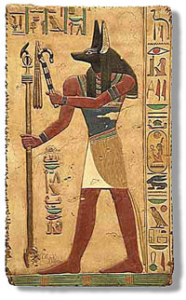The study of humanism is to understand the quality of human life. It’s a system of thought used constantly throughout the artistic culture where its main focus is on humans and their values, capacities, and worth. Humanism can be used in literature, art, and even in civilization, however, the Greek and Romans have made this concept their central focus in art and in life. In the Greek and Roman culture, when it comes to art, may it be the being of a man or woman, the focus is shifted upon the anatomy and pure physicality of that being. Individuality is clearly expressed through each line drawn of chiseled within, as well as, uniqueness. Both, the artist’s individuality is expressed along with the artist’s subject. In comparison, Mesopotamia and Egyptian art focus on the power of the deities, ancient civilization, and God-like representations. The Greek and Romans attention was highly diverted towards the physicality of the human individual.
From Mesopotamia and Egyptian art, comes The Standard of Ur. This is a small trapezoidal box with two sides. Each side is covered with figurative representations and mosaics of ancient life. When looked upon closely, there are three levels that represent life differently. The most lower level portrays the subjects as slaves working for their master, delivering something like a gift for their god. The upper level of The Standard of Ur shows a being larger than the rest of the subjects who breaks the barrier of the upper border. In Egyptian society, a God is commonly represented in art as the largest being visible, which is explains the unusually large figure in this art piece. This God is presented as the almighty being, while all his subjects are kneeling and sitting before him.

Although the tablet allows current society to take a quick look into past civilization and its views on culture, the Greek and Romans had a different belief of what art should depict. They thought that art should be more human-based rather than God-like to express the reality of being human. An example of this would be the statue of Kouros. This is an ancient sculpture representing the nude male youth in an upright stature. In Greek, the name Kouros even means ” youth, boy, especially of noble rank.” The Kouros statue shows a nude male standing straight on both feet, one foot forward, and one foot backward. Anatomically when standing this way, it is quite uncomfortable, however, this was how the ideal male youth was depicted. It is also portrayed as nude because, in the Greek culture, nudity was deemed as prideful and as showing a sense of unimaginable strength. As noticed before, Kouros is standing up straight, but also has a very stiff and rigid stance to him.
This was believed to be the way of humanism in Greek and Roman culture as opposed to Egyptian culture that pertains to a constant higher power or worshiping.













